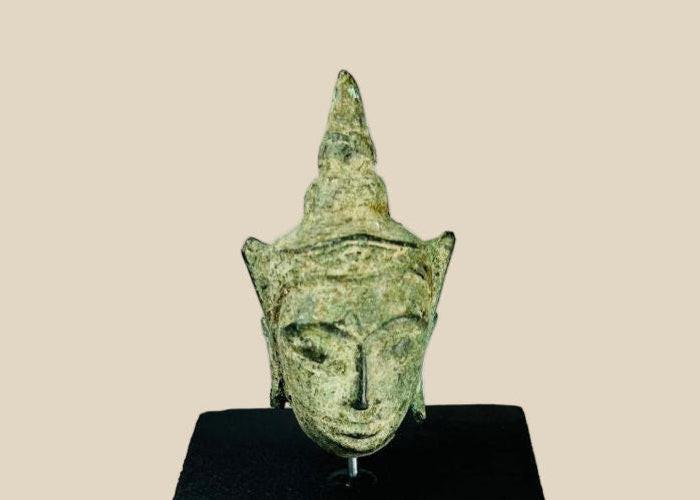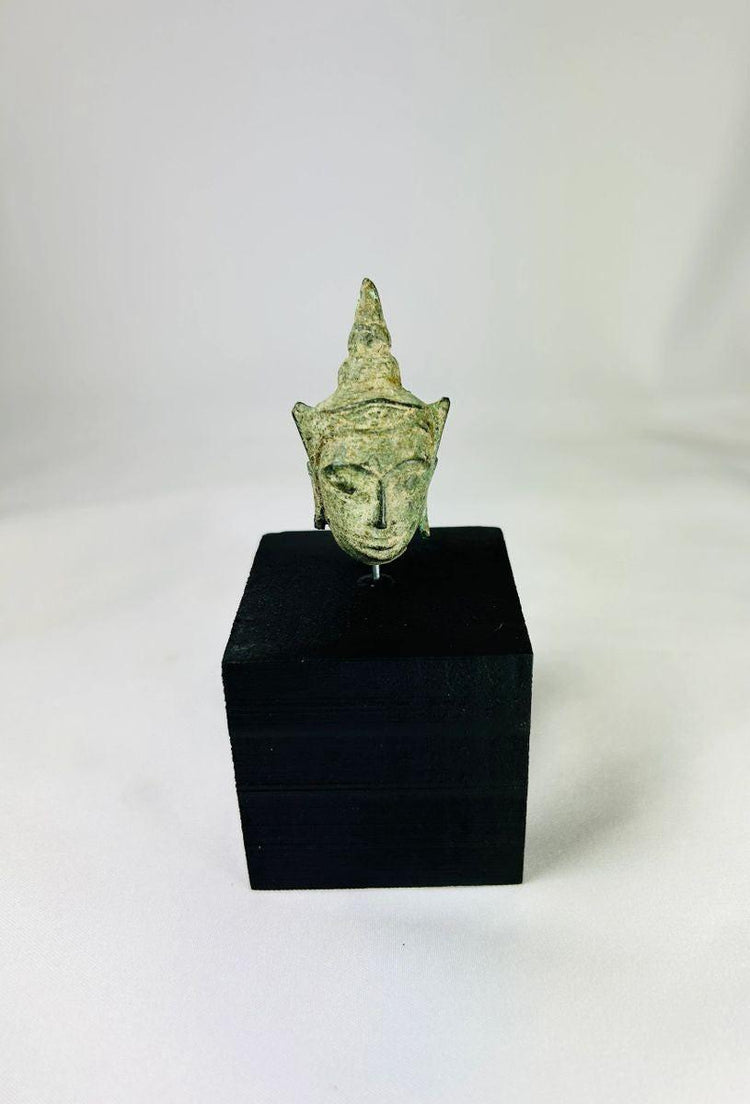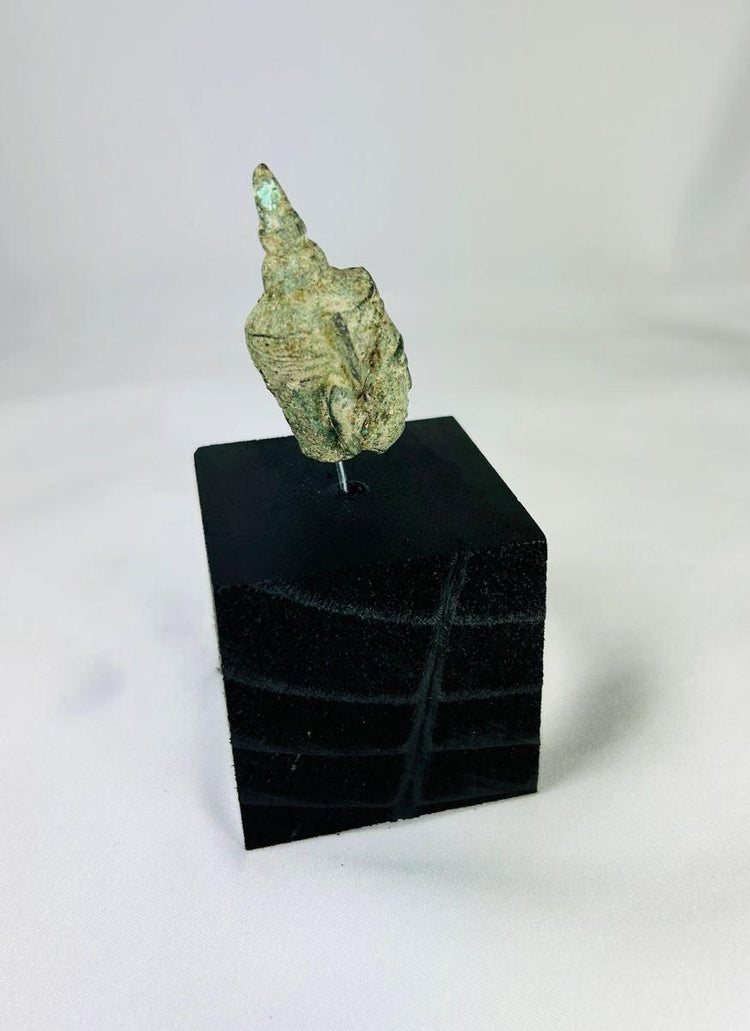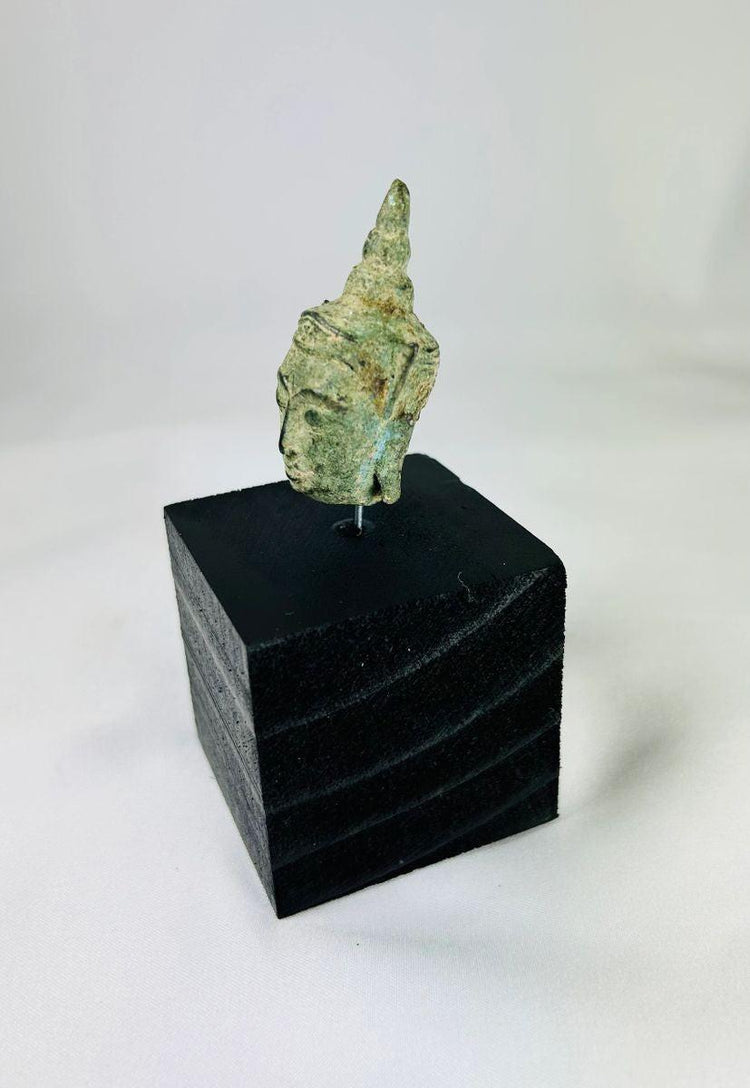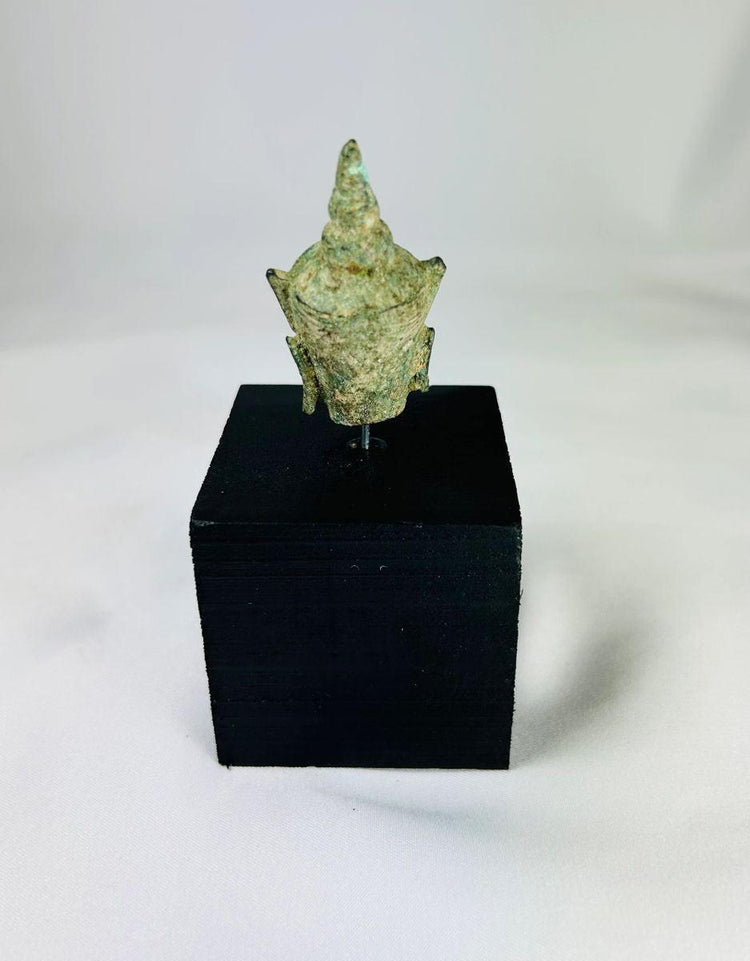Ancient Thailand Bronze Head of Buddha | 16-17th Century AD
Description
More
Less
Historical Context & Origin
Region: Southeast Asia (likely Thailand or Cambodia)
Material: Bronze with greenish patina
Period: 16th–17th Century CE
Description
This small, finely crafted Buddha head is a striking example of Southeast Asian Buddhist art, embodying the region’s devotion to spiritual symbolism and artistic refinement. The piece showcases a serene expression, elongated earlobes, and a pointed ushnisha (topknot), all hallmarks of Buddhist iconography that symbolize wisdom, compassion, and enlightenment. The natural greenish patina across the surface testifies to its centuries-old history, enhancing both its authenticity and aesthetic appeal.
Features
- Serene facial expression embodying peace and enlightenment
- Elongated earlobes, symbolizing wisdom and spiritual awareness
- Pointed ushnisha (topknot), representing the Buddha’s enlightened state
- Aged bronze surface with natural green patina
- Mounted on a modern black display stand for presentation
Cultural Significance
Originally part of a larger statue, this Buddha head would have been enshrined in a temple or placed on a private altar as a devotional object. In Southeast Asia, such figures served as sacred symbols of spiritual guidance, embodying the Buddha’s teachings of serenity, compassion, and the path to enlightenment. This piece reflects the cultural and spiritual legacy of Buddhist art in the region, created to inspire both reverence and inner peace.
Condition
The sculpture remains well-preserved with surface patina consistent with its age. Despite being a fragment, its symbolic features remain clear and expressive. The modern stand highlights the artifact’s form and provides stability for display.
Dimensions (approximate)
Height: 3 in
Width: 2 in
Depth: 2 in
Age
400–500 years old (16th–17th Century CE)
Learn More
Discover the Meaning and Symbolism Behind the Ushnisha
Description
Historical Context & Origin
Region: Southeast Asia (likely Thailand or Cambodia)
Material: Bronze with greenish patina
Period: 16th–17th Century CE
Description
This small, finely crafted Buddha head is a striking example of Southeast Asian Buddhist art, embodying the region’s devotion to spiritual symbolism and artistic refinement. The piece showcases a serene expression, elongated earlobes, and a pointed ushnisha (topknot), all hallmarks of Buddhist iconography that symbolize wisdom, compassion, and enlightenment. The natural greenish patina across the surface testifies to its centuries-old history, enhancing both its authenticity and aesthetic appeal.
Features
- Serene facial expression embodying peace and enlightenment
- Elongated earlobes, symbolizing wisdom and spiritual awareness
- Pointed ushnisha (topknot), representing the Buddha’s enlightened state
- Aged bronze surface with natural green patina
- Mounted on a modern black display stand for presentation
Cultural Significance
Originally part of a larger statue, this Buddha head would have been enshrined in a temple or placed on a private altar as a devotional object. In Southeast Asia, such figures served as sacred symbols of spiritual guidance, embodying the Buddha’s teachings of serenity, compassion, and the path to enlightenment. This piece reflects the cultural and spiritual legacy of Buddhist art in the region, created to inspire both reverence and inner peace.
Condition
The sculpture remains well-preserved with surface patina consistent with its age. Despite being a fragment, its symbolic features remain clear and expressive. The modern stand highlights the artifact’s form and provides stability for display.
Dimensions (approximate)
Height: 3 in
Width: 2 in
Depth: 2 in
Age
400–500 years old (16th–17th Century CE)
Learn More
Discover the Meaning and Symbolism Behind the Ushnisha
You May Also Like
















